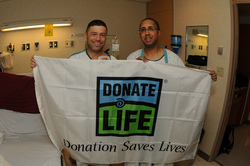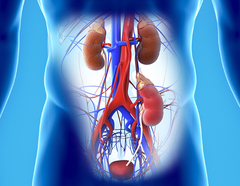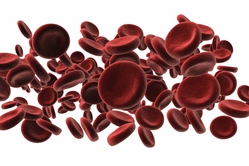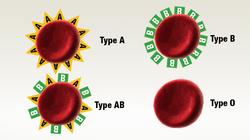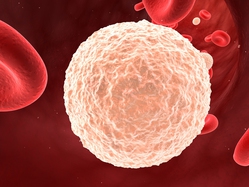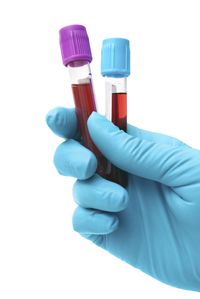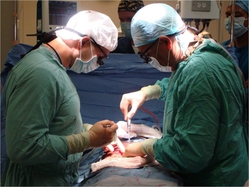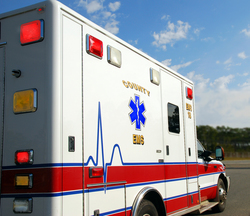The Kidney Transplant Option
A kidney transplant is one way to replace some of the function of kidneys that don’t work. Survival with a kidney transplant is about three times better, on average, than it is with standard in-center hemodialysis.
Some people think that they can’t have a transplant due to age or some other concern. If you are not sure if you can get a transplant, talk to your doctor and the transplant center staff. Or, look online to learn more about the VA Transplant Services.
A New Kidney from a Donor
When you have a kidney transplant, a surgeon puts a kidney from a donor into your body. Your original kidneys are above your waist, under your ribs. The new kidney is placed in your belly, protected by your hip. The scar may be long, or it may be shorter and in the middle of your belly.
If you have type 1 diabetes, you could think about a kidney-pancreas transplant. You’d get a kidney and a new pancreas (on the other side). You might get both organs from one donor, or from two. There is an excellent chance (80–85%) that you’d need no insulin or dialysis for at least 1 year. There is a very good chance (70%+) that a kidney-pancreas transplant will still be working 5 years later. Wait time to get a transplant can be shorter when you are listed for two organs, too.
Transplant: Do You Qualify?
Before you can be cleared for transplant, you need a lot of medical tests. The transplant team needs to be sure you are in good health aside from kidney failure. These tests may include:
- Blood tests
- X-rays of your chest, kidneys, ureters, and bladder
- EKG/echocardiogram
- A heart stress test
- Dental exam
- Colonoscopy
- Psychosocial exam
- Men may need a PSA test to check prostate health.
- Women may need a mammogram and pap smear.
These tests will need to be repeated, depending on how long the wait is.
Important! The VA requires that all transplant candidates have a designated support person before they can be referred to a transplant center. The National Surgery Office recommends, but does not require, that the living donor have a support person.
Transplant: A Foreign Object Your Body Tries to Fight
A transplant is different from the rest of your body—like the green fish is different from the orange fish. Your immune system will react to it as “foreign” and attack it. Transplant drugs partly suppress your immune system. The goal is to keep you healthy, and trick your body into accepting the kidney.
Transplant: Getting a Good Match
Besides taking drugs to suppress your immune system, another way to help your body accept a kidney transplant is to choose one that is a good match for you. Three types of matches are looked at:
- First, the blood type of the donated kidney. Is it compatible with your blood type?
- Next, the tissue type. Is it a good match with your tissue type?
- Finally, blood is tested for a crossmatch to reduce the chance that your immune system would attack the new kidney.
Matching Blood Type for a Transplant
Your blood type depends on antigens that are on the surface of each of your red blood cells. You inherit your blood type from your parents. There are four blood types:
- A
- B
- AB
- O
Type O blood is called the “universal donor” because it has no antigens! Type AB blood is called the “universal recipient,” because it has ALL of the antigens. So, someone with type AB blood can get a kidney from a donor with type A, AB, B, or O blood. This means that it can be faster to get a kidney.
Matching Tissue for a Transplant
HLA is a measure of your tissue type. HLA stands for human leukocyte (white blood cell) antigen. We inherit 3 HLA types from each parent, for a total of 6. Identical twins match all 6. This can also happen in unrelated people. There is no minimum number of HLA types that must match for you to get a kidney. A zero HLA match kidney can work just as well as a 6 antigen match—but you may need to take more medicines to avoid rejection.
Crossmatching for a Kidney Transplant
A crossmatch looks for antibodies in your blood that could react against a new kidney. It tests the serum of your blood (plasma) against a donor’s blood cells. A positive crossmatch means a high chance that your body would attack the kidney. A negative crossmatch means that a transplant with that donor can go forward.
Transplant and PRA
Each month or so while you wait for a kidney, your blood will be tested against a panel of 60 HLA markers. If your blood reacts to 30 of them, your panel reactive antibody (PRA) is 50%. The lower your PRA, the better your chance of getting a kidney transplant. A high PRA means that you are “sensitized.” Few kidneys would be a good match for you.
Your PRA can change from one month to the next. Talk with your transplant team about treatments to reduce your PRA if you are sensitized.
Transplantation and Your Lifestyle
Now that we’ve seen the basics of how transplant works, let’s look at how it might affect your life in the areas of:
- What you can eat and drink
- How many medications you might need to take each day
- How much control you would have over your time
- How work-friendly transplant is
- How travel-friendly transplant is
- How a transplant may affect your sex life and ability to carry or father children
Transplant: Few or No Limits on Diet and Fluids
A transplant may require some limits on what you eat. You may gain weight from the transplant drugs and need to limit calories. Your doctor may also want you to eat less salt than in the standard American diet. But, compared to standard in-center hemodialysis, transplant has far fewer limits on what you can eat and drink.
Transplant and Medications
A kidney transplant will require you to take many medications. You will need to take drugs to block your immune system so it does not attack your new kidney. You may also need blood pressure pills. If you have diabetes or other health problems, you will still need to take prescribed drugs for them, though the dose may change when you have a transplant.
When you get your transplant at a VA transplant center or receive care at a VA clinic, your transplant drugs will be covered for as long as you have the transplant. You may have a small co-pay.
Transplant and Your Job
Do you want to be able to work? Getting a transplant can be work-friendly for many reasons. With a transplant, treatment:
- Just means taking pills every day
- May include some symptoms (from medications), but most people feel well enough to work
- Reduces the chance you might need to go to the hospital—and miss work
- Helps you to have enough energy to work
You will not need to miss work to go to a clinic for regular treatments. You are likely to feel well and have enough energy to work because a transplant can replace up to 50% of lost kidney function, which is more than most kinds of dialysis. And, a transplant works 24 hours a day, just like healthy kidneys.
Kidneys from Living Donors
Kidneys for transplant come from either living people or deceased people. Since healthy people have two kidneys, they can choose to donate one. All surgery carries some risk, though the risk of kidney donation is small. A donor must have most of the same tests as you. Living donors must be healthy, so they tend to recover quickly from the surgery. A kidney is a gift—it is not something you can expect from someone else. A living donor can be a relative or friend.
You can get a kidney before you start dialysis (preemptive transplant). Preemptive transplant can be done with living or deceased donor kidneys. It is easier to schedule a transplant if you have a living donor. Laparoscopic surgery can be done to remove a kidney. Healing is much faster for the donor than with standard surgery.
Kidneys from Deceased Donors
Deceased donor kidneys come from people who are brain dead. Their loved ones donate their organs. A non-profit group called the United Network for Organ Sharing (UNOS) keeps a national transplant list of people who are waiting for an organ. The VA is part of the UNOS System. You must have many tests at a VA transplant center to be on the list—you do not get added to the list just because your kidneys are failing.
When your kidney function drops to about 20%, you can be put on the transplant list. Most people start dialysis before they get a transplant, but some people get a transplant first.
Most people have to wait to get a deceased donor kidney. The wait time may be a matter of months, or it may be as long as seven years or more. The wait time depends, in part, on your blood type.
VA Transplant Centers
You may have a choice of one or more transplant centers. The VA has its own network of transplant centers. Current VA kidney transplant centers are: Iowa City, IA; Nashville, TN; Pittsburgh, PA; and Portland, OR. Kidney transplant centers pending activation are located in Birmingham, AL; Houston, TX; and Miami, FL. For more information about VA transplant centers visit the VA Transplant Program website.
The VA will pay your travel costs to and from a VA transplant center. The VA will also pay for a donor’s travel costs to be seen at a VA transplant center. Ask your VA care team to point you to the transplant center closest to you.
You can also choose to get a transplant at a non-VA center, but then you would need to use Medicare and/or other insurance to pay for your care.
You may be able to get on the transplant list at more than one center (this works best if they are in different areas).
Transplant: What to Expect
Transplant surgery itself takes only 2–3 hours. The kidney may kick in right away, or it may take time. Your hospital stay will usually be 5–7 days. Before you leave the hospital to go home, you’ll get a lot of teaching. The medication regimen is complex and you’ll need to know it. You’ll also learn what sorts of complications to watch for and report to your care team. Total recovery time is about 6–12 weeks. To learn more, contact the VA Transplant Program.

You've reached the end of this topic:
Transplant
- A kidney transplant gives you:
Not scored Having one, new, healthy kidney does enough work to keep your blood clean so you can feel good and do things you enjoy.
- Why must a transplanted kidney be matched to your blood and tissue type?
Not scored Your immune system sees a new kidney as a foreign invader. The more closely it matches your blood and tissue, the fewer medications you may need to keep it healthy.
- A kidney transplant is work and travel-friendly
Not scored A kidney transplant is the most travel-friendly treatment option for kidney failure. Most people who get a new kidney feel healthy enough to work.
- A transplant may improve your sex life and fertility:
Not scored Studies show that people who get a kidney transplant rate their sex lives as better than they were on dialysis. People have been able to father or bear children, too. (If you are a woman, it’s safest to wait 2 years after a transplant to get pregnant.)
- People who get transplants tend to live longer than those who do standard in-center hemodialysis:
Not scored People who get a transplant tend to live about three times longer than those who do standard in-center or peritoneal dialysis. This may be, in part, because only those who are healthy other than having kidney disease can get a transplant.













